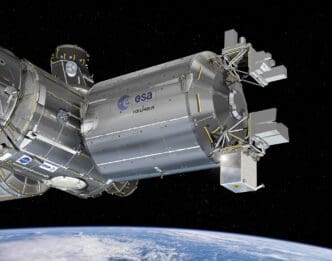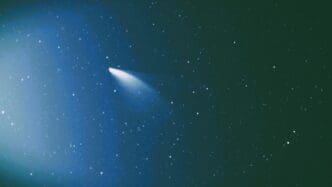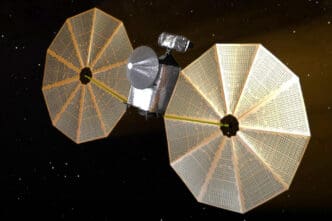In a groundbreaking discovery, scientists have confirmed that asteroid samples collected by a space mission contain essential components for life, alongside saline remains of an ancient aquatic world. This revelation bolsters the theory that asteroids may have contributed to the origins of life on Earth.
The recent analysis of asteroid samples retrieved by NASA’s Osiris-Rex spacecraft has provided the most compelling evidence to date that cosmic bodies like asteroids might have seeded life on Earth. The sample, weighing 122 grams, was collected from Bennu, a near-Earth asteroid, and is considered the largest cache of extraterrestrial material gathered beyond the moon.
These samples, carefully preserved and returned to Earth, revealed pristine elements crucial for life, including amino acids and nitrogen in the form of ammonia. Furthermore, they contained sodium-rich minerals and remnants of a salinated water environment, suggesting a history where water and life-supporting conditions might have once existed on asteroids like Bennu.
Tim McCoy, a scientist at the Smithsonian Institution, emphasized the importance of these findings, noting that such an environment could have been critical in advancing from basic elements to life forms. Meanwhile, the samples’ ability to preserve delicate salts points to the necessity of collecting asteroid materials directly from space, as these fragile components would otherwise dissipate if exposed to Earth’s atmosphere.
The collection of these samples provides a glimpse into the conditions that may have been widespread in the cosmos much earlier than previously thought. Daniel Glavin from NASA highlighted the unexpected abundance of nitrogen compounds within the samples and affirmed their extraterrestrial origin, noting that they were not products of Earthly contamination.
Bennu’s formation narrative suggests its original body, a much larger asteroid, underwent significant transformations through interactions with other celestial objects. This process might have led to an extensive network of subsurface lakes or oceans, the evaporation of which left salt deposits behind. Consequently, small amounts of the treasured Bennu material are being scrutinized by laboratories worldwide to unravel more secrets of its past.
However, to gain a comprehensive understanding, further analysis and additional samples from other asteroids and comets are needed. Future missions are underway, with China planning an asteroid sampling mission, and discussions on collecting potential samples from Ceres and Jupiter’s moon Europa continue. These endeavors aim to broaden our knowledge of asteroids’ role in the cosmic story of life.
The findings from Bennu’s samples underscore the potential for asteroids to have been integral in the development of life on Earth. As scientists continue to explore these ancient cosmic travelers, further insights may illuminate the mysteries of life’s origins and its potential existence elsewhere in the universe.







